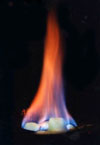 Climate minister Nick Smith and international negotiator Tim Groser have published the schedule for their recently announced consultation exercise on a 2020 emissions target for New Zealand. The hastily arranged exercise (announced only last month, and a surprise to many) has already drawn calls for an interim target of 40% by 2020 from the recently-formed NZ Climate Action Partnership and Greenpeace. In an interesting development, Carbon News is reporting that Green Party climate change spokeswoman Jeanette Fitzsimons has floated the idea that NZ could adopt a split target — setting separate 2020 targets for carbon dioxide, nitrous oxide and methane:
Climate minister Nick Smith and international negotiator Tim Groser have published the schedule for their recently announced consultation exercise on a 2020 emissions target for New Zealand. The hastily arranged exercise (announced only last month, and a surprise to many) has already drawn calls for an interim target of 40% by 2020 from the recently-formed NZ Climate Action Partnership and Greenpeace. In an interesting development, Carbon News is reporting that Green Party climate change spokeswoman Jeanette Fitzsimons has floated the idea that NZ could adopt a split target — setting separate 2020 targets for carbon dioxide, nitrous oxide and methane:
Fitzsimons says that with the technology not yet available to reduce methane emissions from farmed animals – responsible for half of New Zealand’s total greenhouse gas emissions – this country should be thinking about setting separate targets for carbon, nitrous oxide and methane for 2020.
“If we set an overall target that is mainly determined by the difficulty of reducing agricultural emissions, it looks to the rest of the world like we are doing nothing,†she said.
It’s an interesting concept, at the very least, though I have to say I’m not keen on giving agriculture a wholly free ride. Federated Farmers like to insist that the “technology is not available”, but there are a range of options farms can use to reduce emissions, from the use of nitrification inhibitors to better handling of manure (not to mention shifting to low-carbon crops or carbon farming).
Full details of the public meetings below the fold. I’ll be making an effort to attend the Christchurch meeting next Wednesday evening.

 The
The  Last week an essay — Why I Am A Climate Realist — by NZ CSC “science advisor” Dr Willem de Lange started popping up all over the crank web. I first spotted it
Last week an essay — Why I Am A Climate Realist — by NZ CSC “science advisor” Dr Willem de Lange started popping up all over the crank web. I first spotted it  Once again, Ian Wishart is working himself up into a fine frenzy over at his blog, responding to a
Once again, Ian Wishart is working himself up into a fine frenzy over at his blog, responding to a 